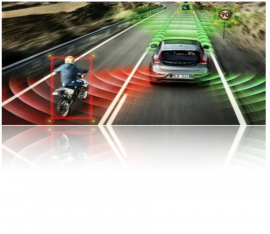
Integrity Monitoring and Prediction Concept for Autonomous Car Resilience and Safety
DESCRIPTION
Autonomous driving is seen by many as a coming technology disruption that will have profound impacts on industry, society and the economy. One of the great hopes of autonomous driving proponents is the realisation of huge safety improvements. According to the World Health Organization, road accidents account for 3,400 deaths every day around the world. This is more deaths than those caused, for example, by HIV-related illnesses. By reducing or even removing entirely the element of human error, autonomous driving has the potential to transform road transport to unprecedented safety levels. Furthermore, due to the efficiency gains possible when road vehicles do not require drivers, autonomous driving may bring about cost savings, as well as environmental savings through more efficient use of resources.
One of the key enabling technologies for autonomous driving is accurate and reliable PNT. According to some experts, autonomous driving requires positioning accuracy of 30 cm or even better, a level which cannot be attained by standalone GNSS positioning methods. Perhaps even more demanding are the requirements for reliability and integrity, and the only way to meet these demands is by integrating dissimilar and redundant technologies.
At present, autonomous vehicles are being tested in many test environments and on public roads in different parts of the world. Many of the key developers in autonomous driving are based in Silicon Valley in the USA (e.g. Google), whereas others are based, for example, in central Europe.
‘Google cars have autonomously travelled an impressive 1.5 million miles. A purely experimental, complete proof that Autonomous Passenger Vehicles (APVs) match the level of safety of human driving would take about 400 years at Google’s current testing rate (of approximately 250,000 test miles per year). This is assuming that no fatalities occur during that time, that no major APV upgrade is performed, and that the testing environment is representative of all US roads. Consequently, other methods must also be employed to ensure APV safety. Mass adoption of APVs requires confidence by public that APVs are safe. And this imperatively implies that a level of safety must be guaranteed. Autonomous vehicles thus require multi-sensor PNT, including laser scanners or radars, whose raw information must be pre-processed before it can be used for navigation. It is therefore necessary to continuously predict integrity in a dynamic environment’.
The objective of the proposed activity is to further develop and prove the practical feasibility of Integrity Risk monitoring and the prediction concept for autonomous vehicles. This concept will be based on the Feature Extraction (FE) and Data Association (DA) techniques, considering the integration of multi-sensors and space and/or ground-based PNT data. It will be based on a derivation of the concept of integrity used in aviation. The activity includes the development of a demonstrator. The activity will assess the key elements, in particular space-based PNT data, to enable faster mass adoption of autonomous vehicles and increase safety in this field.
This activity will include the following tasks:
- Review of available research papers, latest developments, and integrity monitoring and prediction techniques in the field of autonomous vehicles;
- Development of an innovative integrity monitoring and prediction concept for autonomous vehicles, based on the FE and DA techniques. The use of multi-source multi-sensor PNT will be considered by the algorithms;
- Characterise the achievable level of integrity, demonstrating that the target level required for autonomous vehicles can be met;
- Development of a demonstrator;
- Field trials with the developed demonstrator, possibly with partner test sites.
The results of the activity will provide:
- An assessment of achievable integrity performance under the identified scenarios;
- An assessment of the suitability and cost effectiveness of the developed integrity monitoring and prediction concept(s);
- Recommendations for introduction of the developed integrity concept in the domain of autonomous vehicles.
The Executive will ensure coordination with relevant on-going and planned new activities at GSA in the frame of Fundamental Elements (e.g. ESCAPE project) and H2020 (e.g. INLANE and INDRIVE projects).
esa-STAR link: http://emits.sso.esa.int/emits/owa/emits.main
